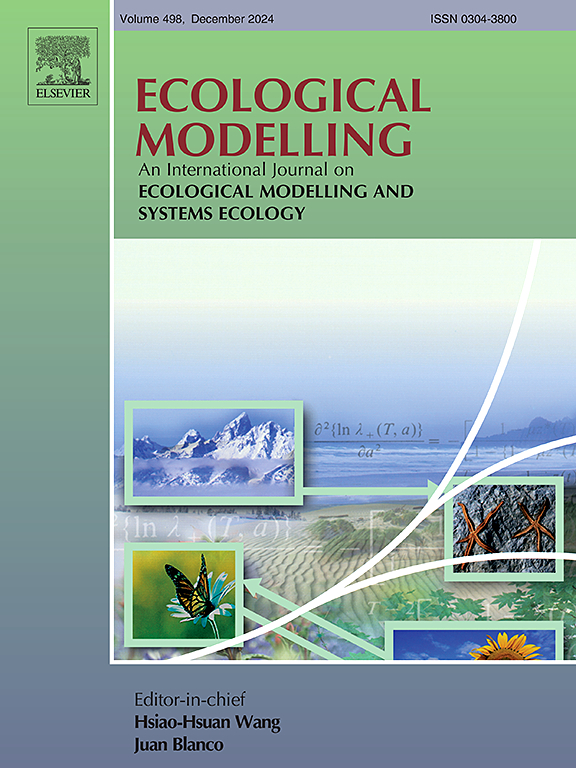利用相互作用特征来衡量食物网中物种的独特性
IF 3.2
3区 环境科学与生态学
Q2 ECOLOGY
引用次数: 0
摘要
物种嵌入在一个复杂的营养相互作用网络中,因此从网络的角度来考察物种的重要性是很自然的。除了通过考虑物种在食物网中网络位置的中心地位(意味着与互动伙伴有良好的联系)来衡量物种的重要性外,近年来物种独特性(意味着在功能上难以被取代)的出现是物种重要性的另一个方面。现有的网络或基于食物的独特性测量是基于物种如何影响其他物种以及它们的营养场如何重叠。在这篇简短的交流论文中,我们证明了考虑物种如何受其他物种影响以及如何将其纳入物种独特性测量的信息也很重要。本文通过对大堡礁食物网的详细分析,展示了物种相互作用模式的新信息如何改变物种的独特性排名。我们进一步分析了92个水生食物网,以检验我们发现的普遍性。对于很少的食物网,用旧方法和新方法得出的物种独特性排名之间的相关性几乎是完美的。对于其余的食物网,这种相关性各不相同,其中许多显示出中等水平的相关性。因此,加入物种相互作用模式的新信息可以为网络或基于食物的物种独特性测量提供新的信息。本文章由计算机程序翻译,如有差异,请以英文原文为准。
Using interaction profile to measure species uniqueness in food webs
Species are embedded in an intricate network of trophic interactions, it is therefore natural to examine species importance from a network perspective. In addition to measuring species importance by considering the centrality of their network positions in a food web (implying to be well connected to interaction partners), recent years have seen the emergence of species uniqueness (implying to be functionally harder to replace) as another facet of species importance. Existing network or food web-based uniqueness measurements are based on how species affect others and how their trophic fields may overlap. In this short communication paper, we demonstrate that it is also important to consider information on how species can be affected by others, and how this can be incorporated into species uniqueness measurement. We demonstrate our approach by analyzing in detail the Great Barrier Reef food web, and show how the inclusion of new information on species interaction pattern can change the uniqueness ranking of species. We further analyze 92 aquatic food webs to test the generality of our findings. For very few food webs, the correlation between species uniqueness rankings derived from the old and the new approaches is almost perfect. For the remaining food webs such a correlation varies, with many showing a medium level of correlation. Thus, including new information on species interaction pattern can offer new information on network or food web-based species uniqueness measurement.
求助全文
通过发布文献求助,成功后即可免费获取论文全文。
去求助
来源期刊

Ecological Modelling
环境科学-生态学
CiteScore
5.60
自引率
6.50%
发文量
259
审稿时长
69 days
期刊介绍:
The journal is concerned with the use of mathematical models and systems analysis for the description of ecological processes and for the sustainable management of resources. Human activity and well-being are dependent on and integrated with the functioning of ecosystems and the services they provide. We aim to understand these basic ecosystem functions using mathematical and conceptual modelling, systems analysis, thermodynamics, computer simulations, and ecological theory. This leads to a preference for process-based models embedded in theory with explicit causative agents as opposed to strictly statistical or correlative descriptions. These modelling methods can be applied to a wide spectrum of issues ranging from basic ecology to human ecology to socio-ecological systems. The journal welcomes research articles, short communications, review articles, letters to the editor, book reviews, and other communications. The journal also supports the activities of the [International Society of Ecological Modelling (ISEM)](http://www.isemna.org/).
 求助内容:
求助内容: 应助结果提醒方式:
应助结果提醒方式:


